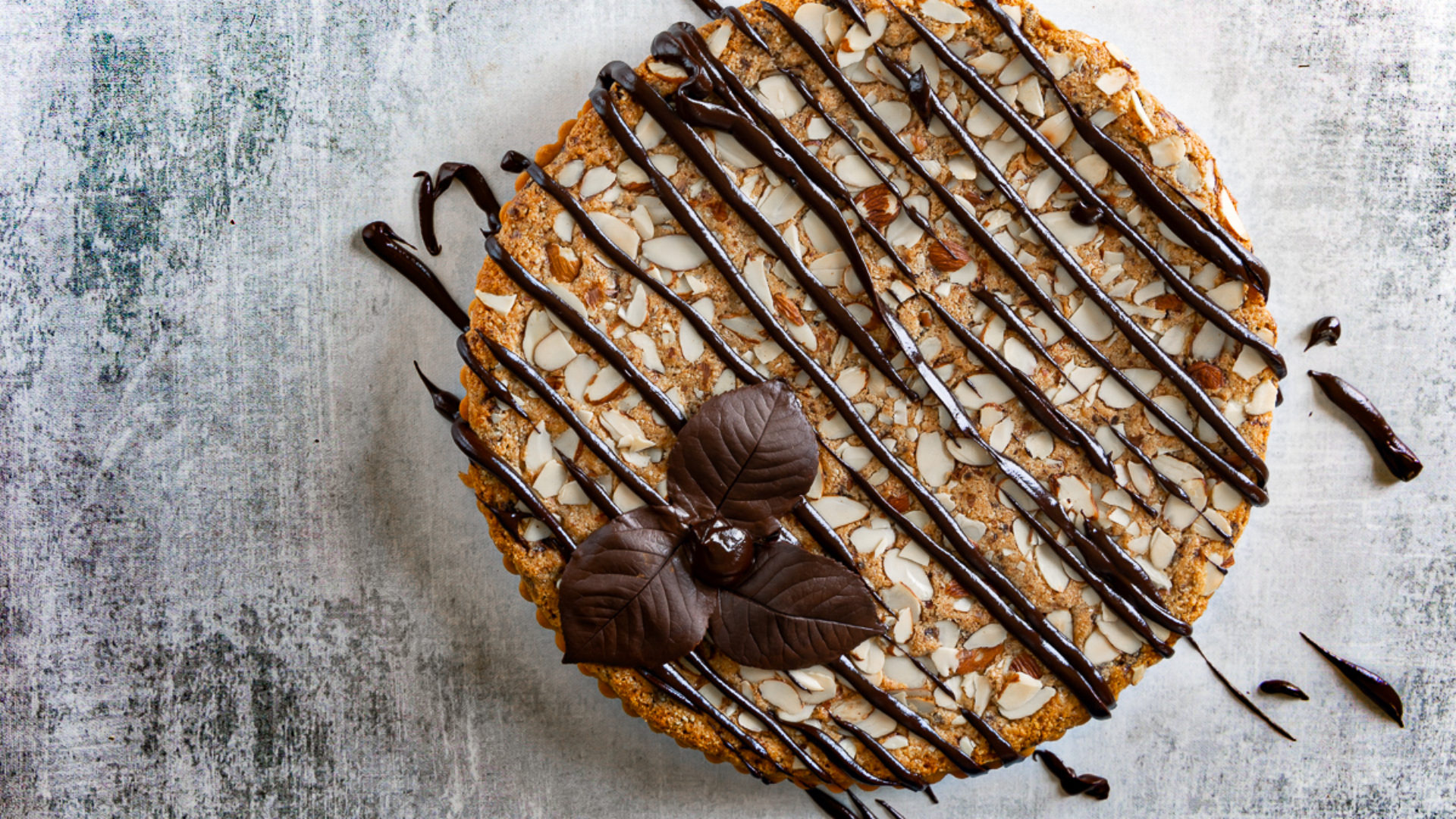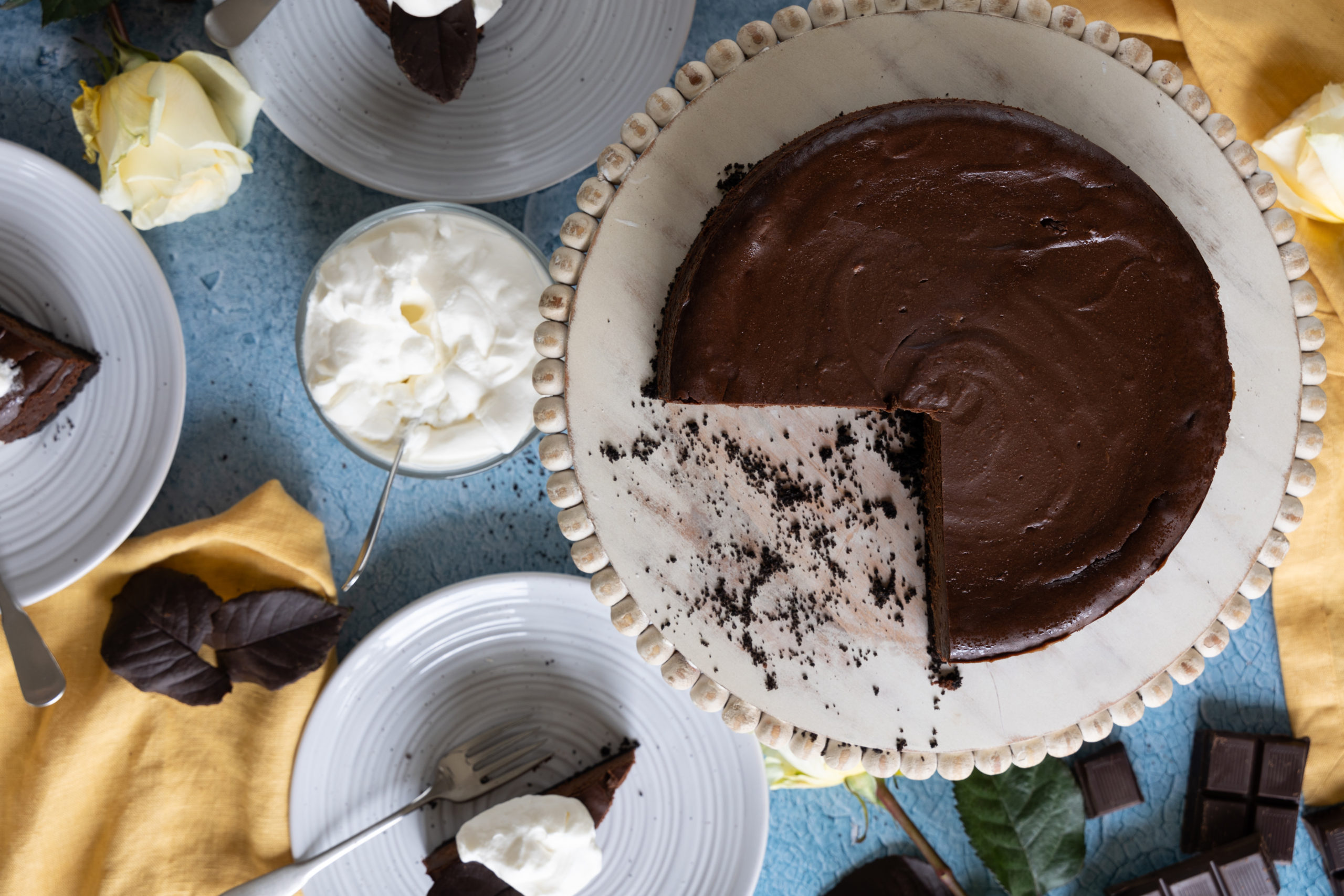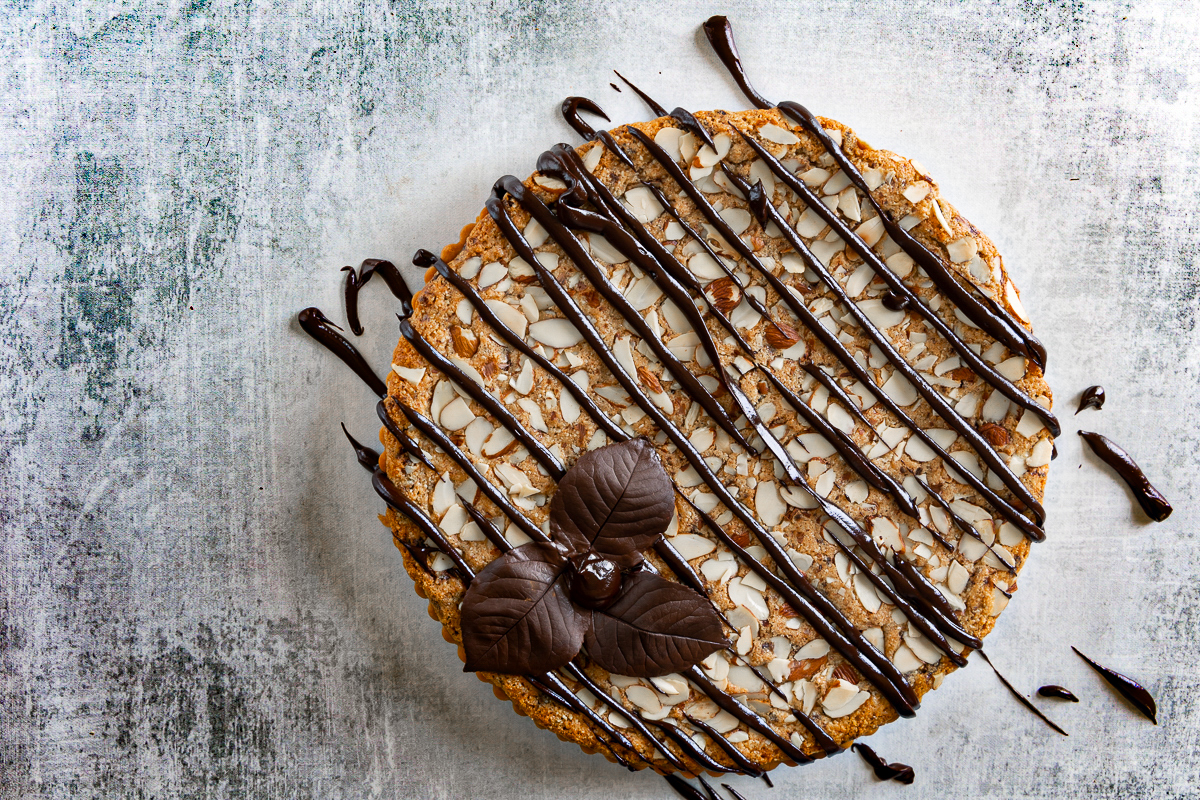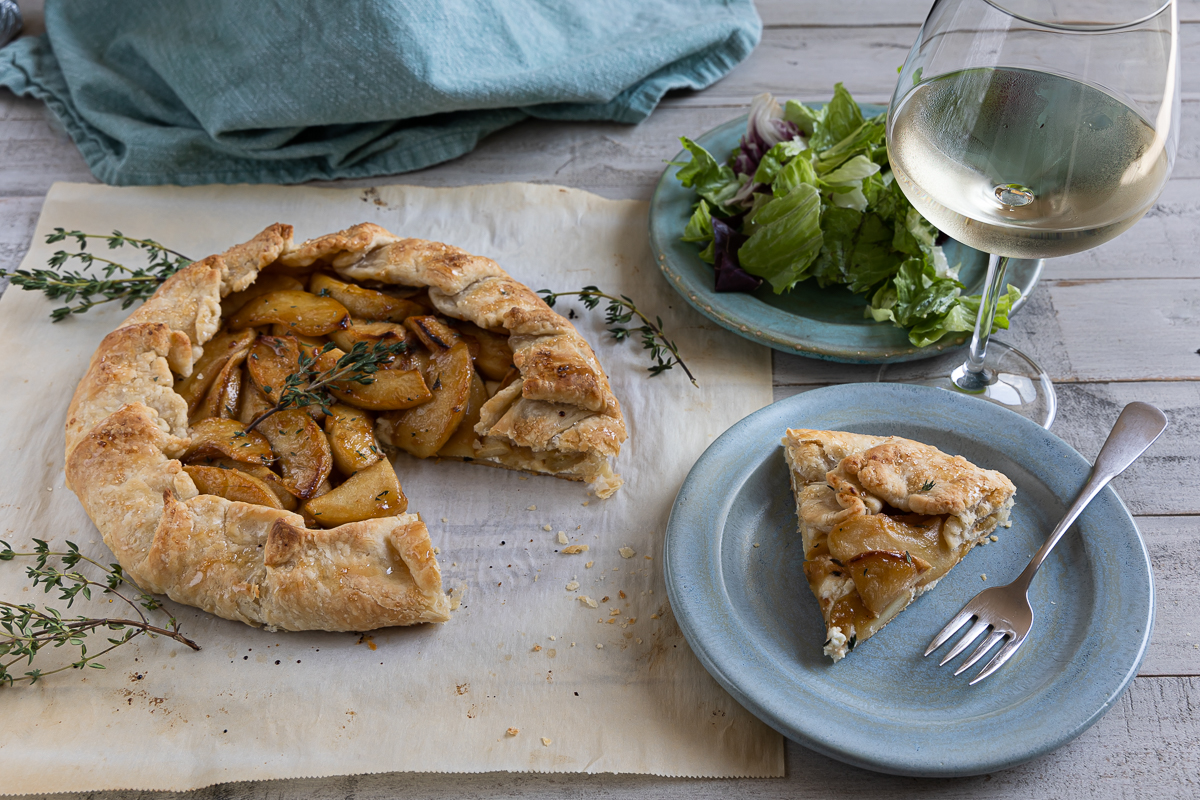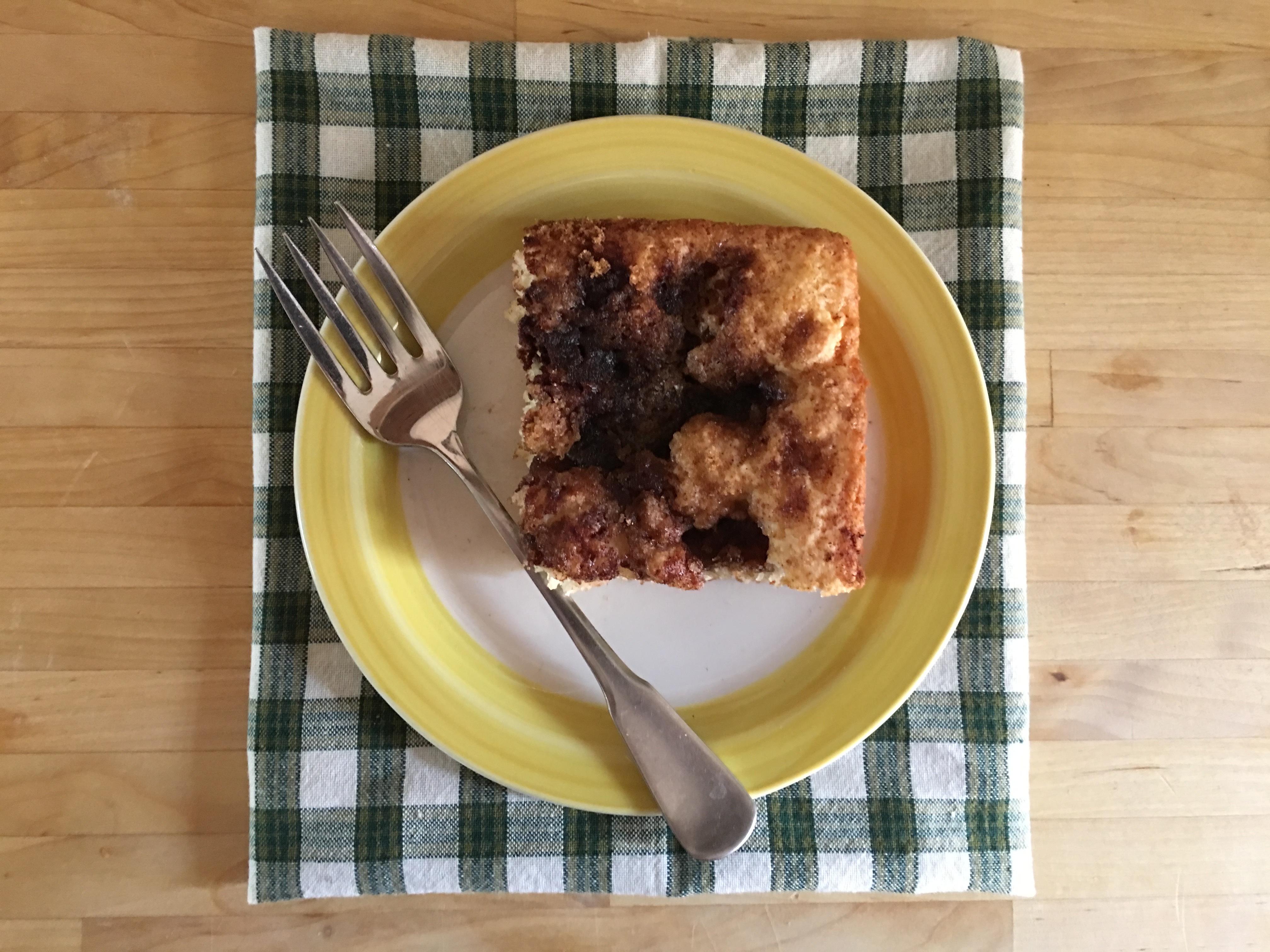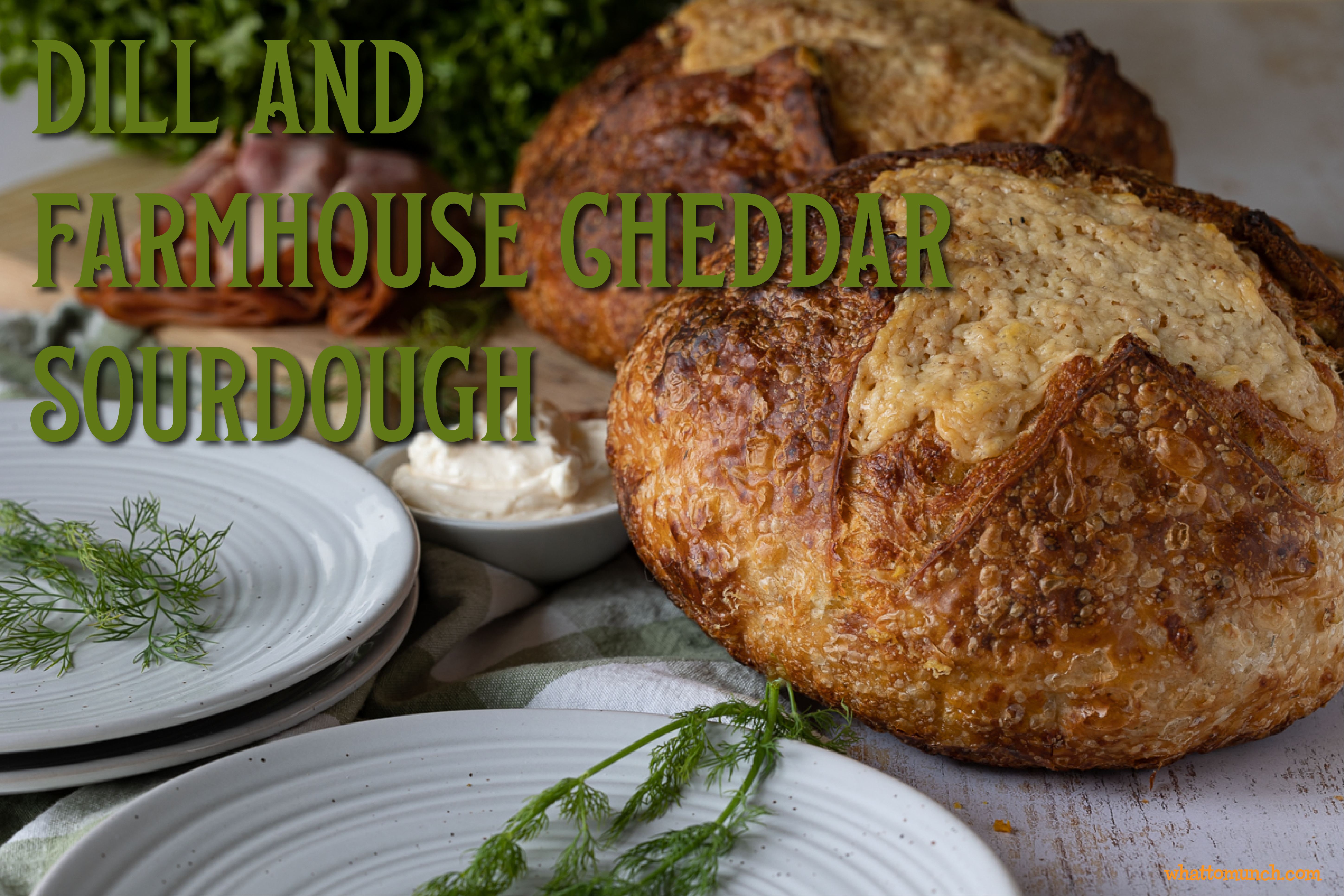Dill and English cheddar sourdough is one of the oldest versions of sourdough I have baked. Long ago, in my late teens, I had played around with sourdough baking, and dill with cheese was one of the first additions I had tried. I loved it then, and I still love that combination now. I used to work in a cheese shop when I was 19, and one of the things we sold a ton of was this dilled Havarti cheese that I would sneak bites of when no one was looking, oh the wilds of youth! When I wanted to add dill to sourdough cheese as a natural pairing, I wanted something with a little more oomph than Havarti, so I chose an English farmhouse cheddar. The rich tangy creaminess of English farmhouse cheddar lends itself wonderfully to this bread. It is the supporting player here but in a fantastic way. English Farmhouse Cheddar has a smooth creaminess and depth of flavor American cheddar just doesn’t have. If you love dill and cheese, this is an excellent sourdough recipe to try.

This Dill and English Farmhouse Cheddar Sourdough is delicious on its own, and it also makes incredible ham sandwiches. If you want to be decadent, it is the perfect vehicle for some smoked salmon, capers, and a little cream cheese. It is a fantastic addition to anyone’s sourdough repertoire and a nice change from the regular sourdough loaves I have been baking. This is the ticket if you have a sourdough starter that needs something new to try. If you are new to sourdough baking, I have several sourdough recipes posted, including a plain one and the gochujang and garlic one that are also fantastic. I have a guide on how to start your own starter here.

I use several different Dutch ovens for baking my bread. Though I own a great baking steel, I prefer using a Dutch oven for boules, as it holds in the steam and creates an incredible crust. You can find them on Amazon (I get a small commission at no cost to you from Amazon. If you use any link on this page, please consider helping fund my food journey.) And I find this scraper and baker’s lame invaluable too.

Ok, that is all for this week. If you are looking for a new sourdough flavor to bake, this Dill and English Farmhouse cheddar sourdough is a fantastic one to make. There are some signs that we are finally emerging from this mess, and hopefully, there are sunny days ahead. Please think of others on your choices. We all need to get through this together. Until next time!


- 300 grams all-purpose flour
- 700 grams bread flour
- 750 grams water
- 150 grams active sourdough starter
- 15 grams of sea salt
- 226 grams or 8 oz grated English farmhouse cheddar cheese about 2 cups, divided
- 2 tablespoons finely chopped fresh dill
-
The night before or in the early morning or about 6 – 8 hours before you want to start the dough process, feed your sourdough starter and let it sit in a cool place.
-
Simultaneously, mix together in a very large bowl or plastic tub, the all-purpose and the bread flours. Add the water and mix it until moistened. It doesn't have to be perfect, just well mixed, to let the water and the flours become friends. Do not use a metal container. Sourdough reacts with some metals and gives off a metallic taste.
-
Cover the dough with plastic wrap and let it sit out while your starter gets ready for the party. Note: This is called autolyze and will help develop some incredible flavor and develop some of the gluten. The flour and water could be mixed together in a pinch just before mixing the dough if you forgot. But it won't have as much depth to the flavor, and the gluten development won't be as much.
-
Making the Dough
-
When your starter has doubled or more and is bubbly, the starter is ready for action. It may look like it has fallen in on itself. That is ok, too. Another way to test to see if your starter is ready is if a tablespoon or so dropped into some water floats. Measure out 150 grams of the starter and add it to the flour mixture. Don't forget to feed your starter again for the next time.
-
Using your hands, really get in there and mix it to thoroughly combine, working the dough well to make sure the starter has been thoroughly mixed into the dough.
-
Sprinkle the sea salt over the rough dough. Then, with your hands again, really get into the dough, squeezing with your fingers and pulling and stretching until you can feel the salt crystals have dissolved. It doesn't have to be perfect. This may take a couple of minutes. You do not need to actually knead the dough; just make sure it has been thoroughly mixed.
-
When you feel the dough has been well mixed, pull and stretch the dough, grabbing one edge and pushing down towards a farther edge. Begin to form a mass, continuing in a circle until you have made a rough ball of dough.
-
Scrape down the sides of whatever container you are using and cover with a lid or plastic wrap.
-
Let rest for 30 minutes or so. You can extend this to 45 to 50 if your schedule needs it.
-
Uncover the bowl. Wet your hands to prevent the dough from sticking and grasp one edge of the rested dough. I like to keep a bowl or measuring cup of water next to the rising dough to do this. Pull up and stretch out the ragged mass of dough several inches above the surface. Bring the dough over onto itself and push it down towards the further edge. Turn the bowl ¼ and repeat, stretching the dough again. Continue this until you have come full circle. The dough should have gathered into a ball again, this time a bit smoother.
-
Cover again and let rest for another 30-45 minutes.
-
Repeat the folding process. Each time the dough ball starts out looking very flat and loose. It will tighten more and more after each fold.
-
On this fold, add 1 1/2 cups (170 grams) of the grated farmhouse cheddar and the chopped dill. Stretching and folding as before, continue until they have started to disperse throughout the dough. You will have one more fold after this to fully incorporate the mix-ins. Let rest for 30 minutes again.
-
Refrigerate the remaining cheddar cheese for topping as you bake.
-
Repeat the pulling and stretching one more time.
-
The final time the ball of dough will look very smooth, and the dough will have a lot of elasticity. It will gather into a nice tight ball.
-
Let the dough rest and rise until more than doubled, with large bubbles visible. It will take 5-8 hours in total from the first mix with the starter, depending on the temperature of your kitchen and the humidity.
-
Line two rising baskets or medium bowls with cotton tea towels.
-
Scrape the bread dough onto a floured work surface.
-
Divide the dough into 2 equal pieces. Roughly gather them into a ball and let rest for 10 – 15 minutes to relax the gluten.
-
Using a dough scraper in one hand and coating your other hand lightly in flour, pull one of the rough dough balls towards you onto a clean surface area. Using the tension and a slightly circular motion, continue to turn the ball until it forms into a tight ball. You should see bubbles underneath the surface.
-
Place ball of dough seam side up into the cloth-lined basket or bowl. Pinch together the dough if there are any rough surfaces.
-
Repeat with the second ball of dough.
-
Wrap each filled basket with plastic wrap.
-
Let sit in the refrigerator for 24-48 hours. I have found the best sour flavor is in the 36-hour area. But it all depends on your needs and timing. It needs to retard for at least 24 hours or longer to get the fantastic blisters.
-
About 1 hour before you want to bake, place 2 Dutch ovens in a cold oven with the lid askew. Preheat the oven to 450° and let the Dutch ovens heat for one full hour.
-
Pull the loaves out of the fridge when you are ready to bake.
-
Cut 2 parchment paper rounds approximately 12 inches across. Thoroughly crumple and wet under a running faucet. Place one crumpled parchment round down on a work surface and smooth it out. But keep it wet. You want the extra water to create steam in the Dutch oven.
-
Using oven mitts, carefully remove one of the Dutch ovens and place it on a trivet or a heatproof surface.
-
Unmold one of the loaves onto the center of one wet parchment paper circle.
-
Quickly slash the loaf in a cross design on the top.
-
Lift the slashed loaf by the parchment paper and carefully place it into the hot Dutch oven.
-
Using oven mitts, immediately place the hot lid onto the filled Dutch oven and put it into the hot oven. Be careful; the Dutch oven is scorching. Make sure to use oven mitts.
-
Quickly repeat with the second loaf.
-
Bake covered in the oven for 20 minutes.
-
Uncover the Dutch ovens and sprinkle the remaining cheddar cheese into the open slashes.
-
Bake for an additional 20 – 25 minutes. The bread should be deeply golden and sound hollow when tapped. Unmold onto a rack and remove the parchment paper.
-
Let cool completely before slicing. If you can wait that long, it will slice easier.



